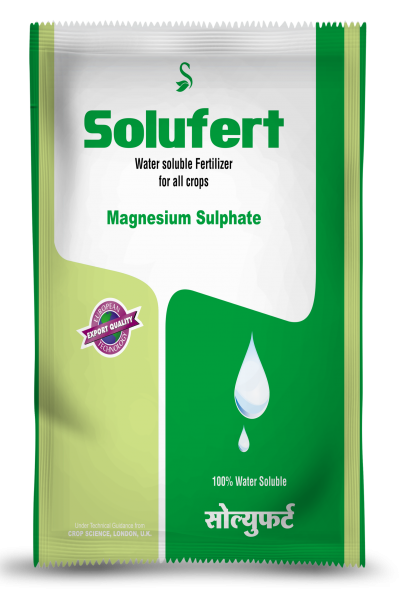
| Moisture percent by weight, Min. | 0.5 |
| Water soluble Potash (as K2O), percent by weight, Min. | 22.0 |
| Magnesium as MgO percent by weight Min. | 18.0 |
| Total chloride (as Cl) percent by weight (on dry basis)Max. | 2.5 |
| sodiam as (as NaCl) percent by weight(on dry basis) Max. | 2.0 |
500 Gram
1 kg
10 kg
25 kg
Magnesium Sulphate
The compound magnesium sulfate (anhydrous) contains magnesium, sulfur, and oxygen, MgSO4.
Magnesium sulfate also occurs in hydrated forms (MgSO4xH2O), including monohydrate and
heptahydrate. The monohydrate and heptahydrate forms contain one and seven H2O molecules,
respectively (ChemIDplus Lite, 2011; Kawamura and Rao, 2007). Magnesium sulfate is considered ionic
because a metal (magnesium) and a non-metal (sulfate) are bonded. Within the sulfate molecule, there is a
covalent bond between the sulfur and oxygen atoms.
Properties of the Substance:
Magnesium sulfate is an odorless solid that is generally found as needle-like colorless crystals or as a white
crystalline powder (Kawamura and Rao, 2007). The substance is considered very soluble in boiling water.
Different forms of magnesium sulfate have different molecular weights and differ in their solubility in
water. The physical and chemical properties of magnesium sulfate are presented in Table 1.
Specific Uses of the Substance:
Magnesium sulfate has a wide variety of uses in agriculture, food processing, personal care products, and
medicine. In agriculture, magnesium sulfate is added to soil to correct for magnesium deficiency
(Kawamura and Rao, 2007). Crops that heavily depend on magnesium-rich soil include potatoes, peppers,
tomatoes, and roses. Magnesium sulfate is also commonly added to potted plants. The high solubility of
magnesium sulfate makes it an ideal compound for adding magnesium to the soil. Adding magnesium
sulfate to the soil improves the uptake of nitrogen and phosphorous by crops (Epsom Salt Council, 2009).
